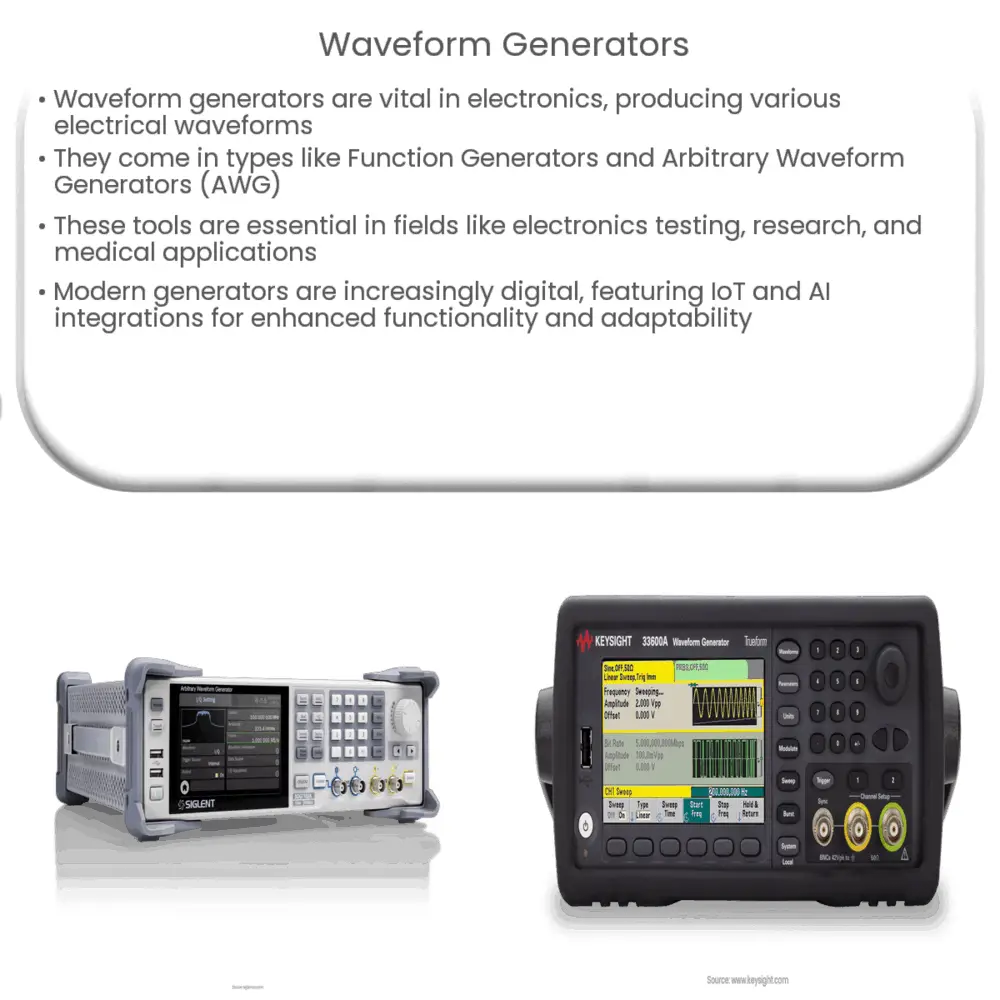Explore the basics, types, applications, and modern trends of waveform generators in this comprehensive guide. Ideal for electronics enthusiasts.

Introduction to Waveform Generators
Waveform generators are indispensable instruments in the realm of electronics. They are used to produce electrical waveforms over a wide range of frequencies. These waveforms can be either repetitive or single-shot, depending upon the need.
Types of Waveform Generators
Waveform generators can be categorized into several types, each designed to suit a specific range of applications. Some of these categories are:
- Function Generators: These are the most common types, capable of generating simple waveforms like sine, square, and triangle waves.
- Arbitrary Waveform Generators (AWG): An AWG is a more sophisticated version, capable of generating any waveform that is mathematically describable.
- Pulse Generators: As the name suggests, these generate pulses rather than continuous waves.
- RF and Microwave Signal Generators: These are highly specialized generators used for testing and alignment of radio receivers and other devices.
Applications of Waveform Generators
Waveform generators play a crucial role in a wide range of fields. A few of these applications are:
- Electronics Testing: They are used to simulate real-world signals that a device under test might encounter.
- Research and Development: In the research domain, they are used to stimulate a response from a system or component for testing and analysis.
- Medical: In medical research and healthcare, waveform generators are used for various diagnostic and therapeutic purposes.
Key Parameters of Waveform Generators
When selecting a waveform generator, several factors need to be considered. Some key parameters include:
- Frequency Range: The range of frequencies a generator can produce.
- Waveform Types: The different kinds of waveforms the device can generate.
- Output Impedance: The resistance offered by the generator to the flow of AC current.
The selection of a waveform generator depends largely on the specific requirements of a project or an experiment. Understanding the specifications and functionalities of different types is paramount for optimum performance and accurate results.
Waveform Generators in the Modern Era
Modern waveform generators are increasingly digital and often combined with other test equipment for added functionality. They are now designed to have additional features such as modulation capabilities, built-in standard waveforms, and digital pattern generation.
- Digital Waveform Generators: These generators produce digital (discrete-time) signals. They come with a digital display that helps users set the desired frequency, amplitude, and waveform type.
- Software-Based Generators: Software-based generators leverage the power of modern computing to create complex waveforms. They offer more flexibility and can be easily integrated with other software tools.
Emerging Trends and Innovations
As technology advances, waveform generators are witnessing a host of innovations. One such trend is the integration of IoT capabilities for remote operation and control. Another is the addition of AI capabilities for intelligent signal generation and analysis.
- Internet of Things (IoT): The IoT allows waveform generators to be controlled remotely, making it easier for teams spread across different locations to collaborate.
- Artificial Intelligence (AI): AI enables waveform generators to learn and adapt to different scenarios, improving their efficiency and reliability.
Conclusion
In conclusion, waveform generators are an essential tool in various industries including electronics, research, medical, and more. Their capabilities range from generating simple waveforms to complex patterns, which can be utilized in different applications. Understanding the functionalities of different types of waveform generators helps in choosing the right device for specific needs.
With the advent of digital technology, waveform generators have undergone significant transformation. The integration of modern computing, IoT, and AI into these devices has expanded their capabilities, offering more flexibility and precision. As we move forward, we can expect even more sophisticated waveform generators that will continue to drive innovation and efficiency in numerous fields.

